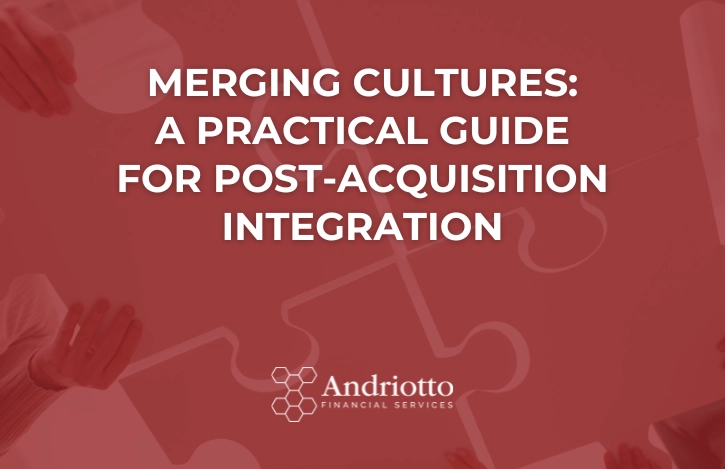Mergers and acquisitions offer opportunities to accelerate growth and improve shareholder returns. However, many deals underperform due to overlooked challenges in post-acquisition integration. While acquiring firms tend to invest heavily in financial and operational due diligence, they often neglect the day-to-day experience of the acquired workforce. This omission can weaken employee morale, reduce engagement, and threaten the long-term value of the acquisition.
To preserve deal value, organisations must proactively manage the employee integration journey. This includes cultural alignment, structured onboarding, and clear communication. A thoughtful approach supports buy-in from acquired employees and enhances the overall success of the merger.
The Hidden Risks in Overlooking Employee Experience
Acquired employees often feel undervalued, underinformed, and unsupported. These perceptions lead to disengagement and decreased productivity. Research and interviews with employees involved in more than a dozen acquisitions revealed consistent concerns. Employees frequently described the process as emotionally disruptive. For some, it resembled a personal loss, rather than a professional transition.
The disparity in engagement between legacy and acquired employees can linger for years. This not only hampers performance but also undermines customer satisfaction and innovation. Ironically, most acquired employees want to contribute meaningfully to the newly formed organisation. They bring not only products and technologies but also insight and talent.
When acquiring organisations demonstrate awareness of these concerns, even small gestures of empathy and support create goodwill. This builds trust and increases buy-in for cultural and operational integration.
Begin with a Culture Assessment
Before merging operations, conduct a culture assessment that includes surveys, focus groups, and interviews. This should evaluate both the acquiring and acquired organisations. Tools such as the Denison Organisational Culture Survey can provide structure to this process.
Understanding how both sides approach decision-making, collaboration, and innovation is essential. Mismatches in these areas often generate tension. For instance, when a risk-averse organisation acquires a risk-taking firm, delays in innovation can result. Anticipating such differences allows leaders to plan responses that respect both perspectives.
National culture differences should also be considered. Approaches to hierarchy, communication, and rule adherence vary widely. Without proper planning, these contrasts can trigger misunderstandings and friction.
Develop a Culture Integration Strategy
Following assessment, design a strategy to align cultures in a way that reflects business goals. Whether aiming to blend, assimilate, or maintain distinct cultures, clarity is essential. Define objectives and anticipate resistance.
Address sources of resistance through transparent communication. Explain the reasons behind the integration approach. When rationale is shared clearly, employees are more likely to accept changes. In one example, a large firm successfully explained its slower decision-making process to employees from an agile start-up. By walking them through the benefits of multiple feedback rounds, trust was built and the transition smoothed.
The success of post-acquisition integration depends on consistent messaging and cultural empathy.
Map the Employee Journey
Acquired employees face a range of emotional and practical challenges. A detailed employee journey map helps anticipate and address them. This map should cover a 12 to 24-month timeframe and identify key milestones.
Include everything from access to systems and ID badges to updated HR processes and performance management. Even seemingly minor oversights—like deactivating old IDs too soon—can create frustration.
Support mechanisms should combine automated tools and human interaction. While self-service portals offer efficiency, complex or personal issues benefit from direct contact with HR representatives. For example, navigating parental leave options may require individual support.
Regularly update the journey map as integration unfolds. Be honest about what is known and what is not. Overpromising leads to distrust when circumstances change.
Enable Mid-Level Managers
Mid-level managers play a pivotal role in cultural integration. Employees look to them for clarity and guidance. Yet, these managers are often excluded from strategic planning. Without sufficient information, they struggle to answer questions or represent leadership decisions effectively.
To support managers, provide them with up-to-date information and clearly define their responsibilities. Offer regular forums, such as webinars with Q&A sessions, to maintain communication. Encourage them to gather feedback from their teams and share it with senior leaders.
Empowered managers act as translators between vision and execution. Their involvement strengthens the post-acquisition integration process.
Plan for Flexibility
No integration plan survives contact with reality unchanged. Therefore, build flexibility into every phase. Be prepared to adjust timelines, resources, and expectations as new information arises.
For example, assumptions about the speed of integration may need to shift if unexpected operational complexities surface. Rather than viewing course correction as failure, treat it as responsive leadership.
Use pulse surveys to monitor the evolving sentiment of acquired employees. Short, regular check-ins reveal engagement levels and highlight potential issues. Taking action based on this data demonstrates a commitment to the integration experience.
Value Lies in the Integration Experience
Merger success relies not just on deal quality but also on the experience and engagement of the people involved. Focusing on post-acquisition integration—especially from the employee perspective—reduces resistance, improves retention, and protects the long-term value of the acquisition. Thorough culture assessments, mapped journeys, equipped managers, and flexible planning help organisations build environments where merged teams thrive. Strategic integration is not an afterthought—it is central to realising the promise of growth.
Source: Harvard Business Review (HBR, 2025)
At AFS, we are passionate about fostering innovation and empowering ambitious minds to flourish. Our mission is to provide best-in-class financial services for traditional and crypto deals, exploit European grants, and use quantitative methods to improve clients’ performance. We aim to help our customers unlock their full business potential.
Let’s unlock your enterprise’s full potential together!
Get in touch at [email protected].


